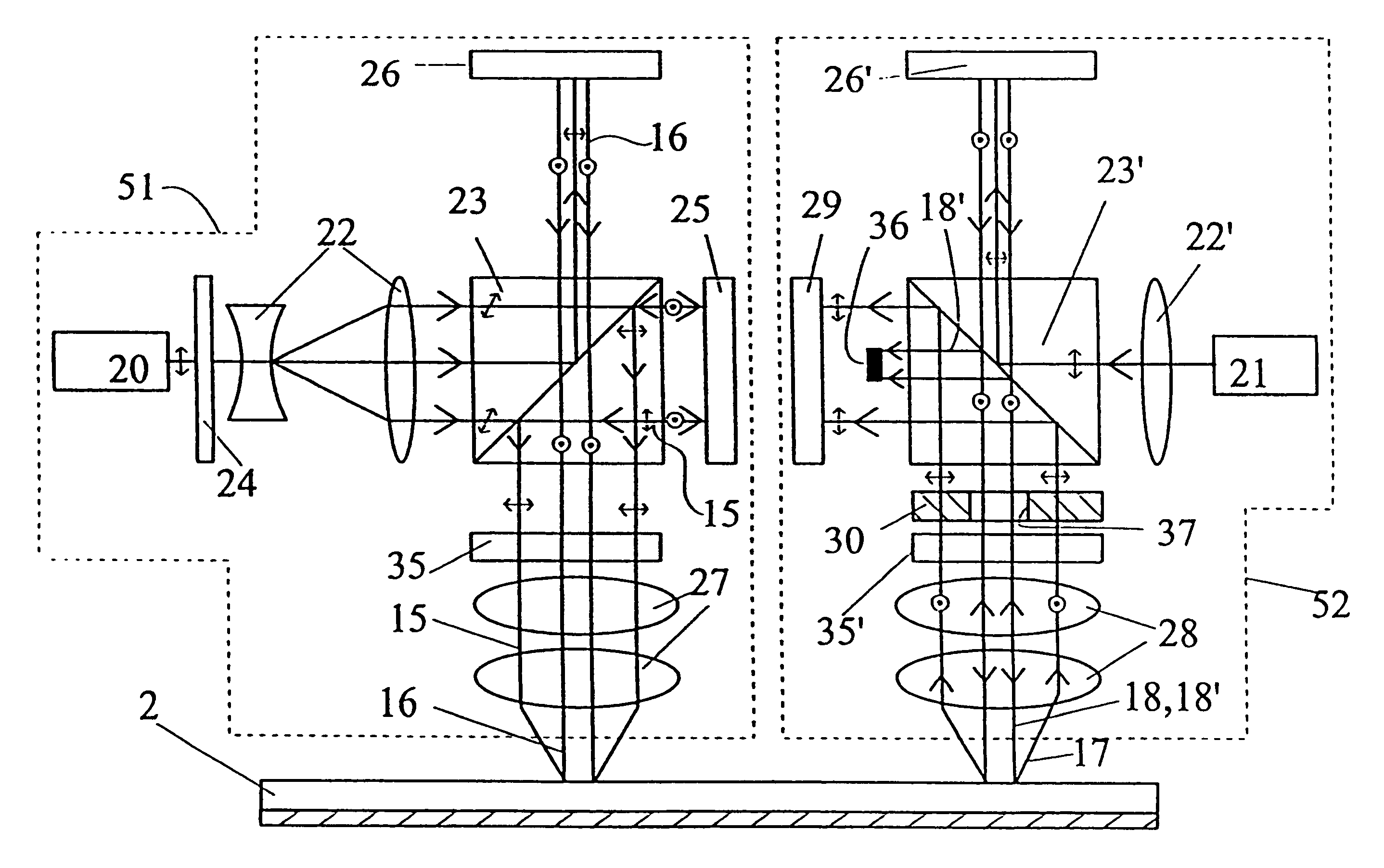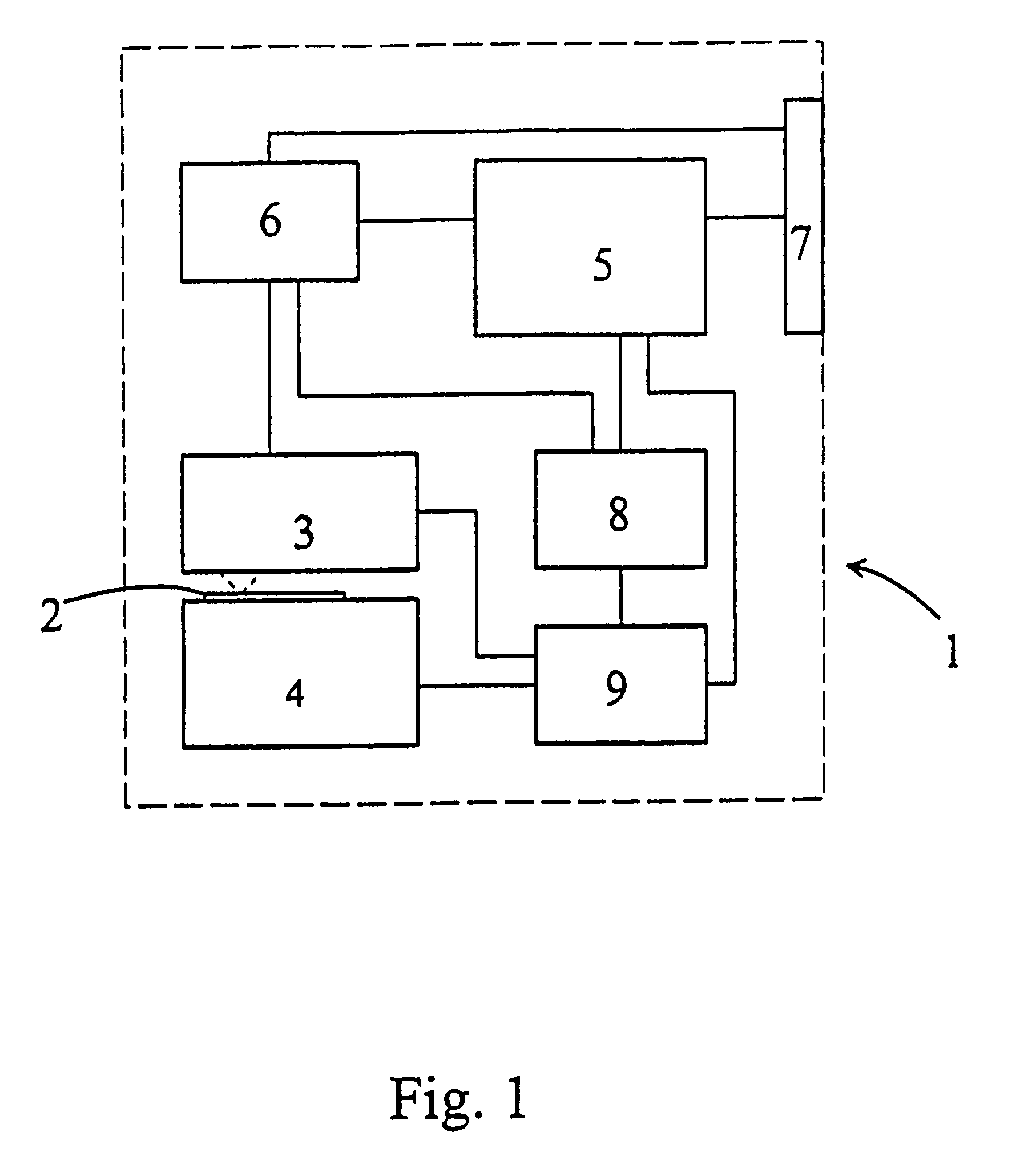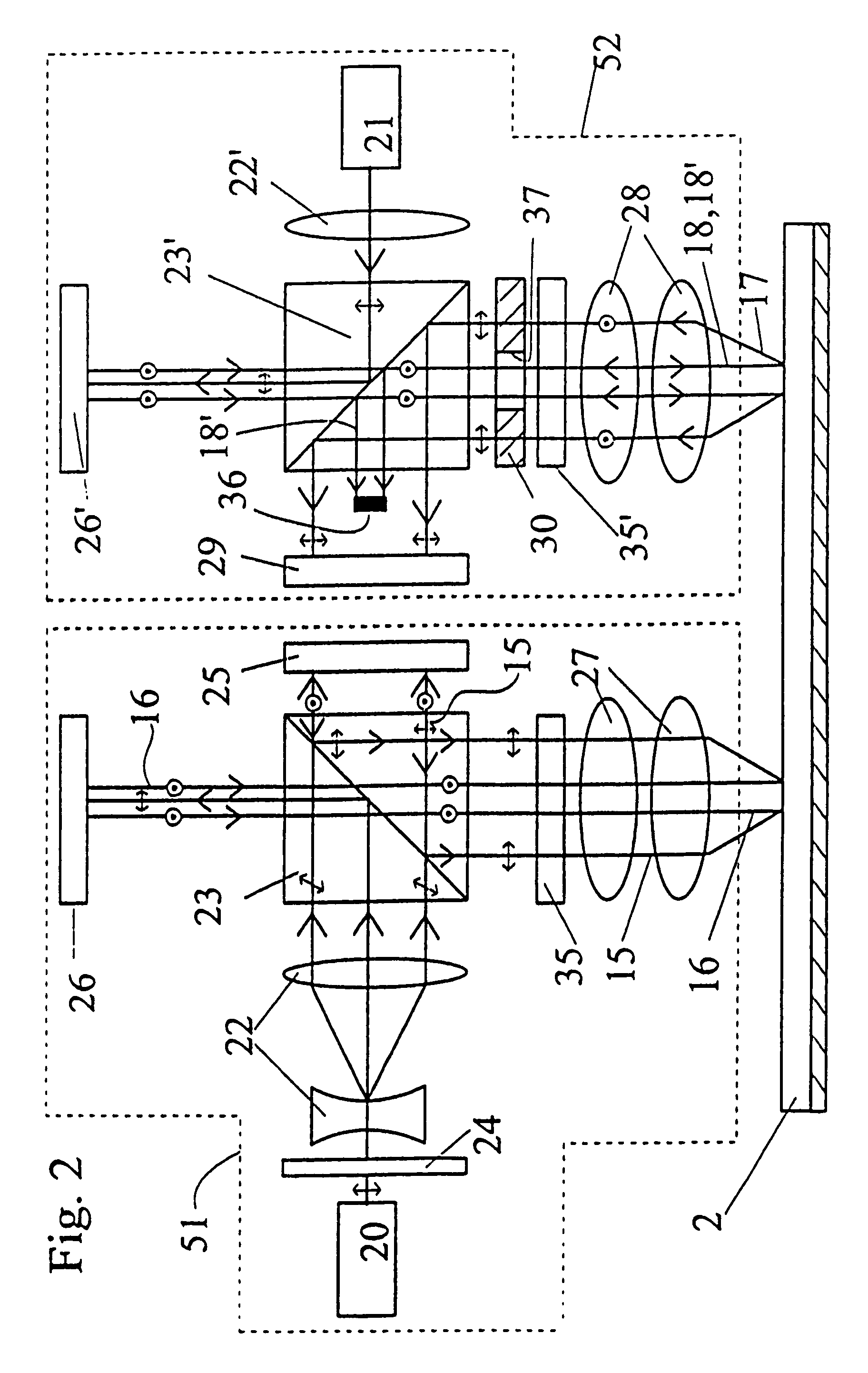System and method for recording of information on a holographic recording medium, preferably an optical card
a technology of holographic recording medium and optical card, which is applied in the field of system and method for recording information on holographic recording medium, preferably optical card, can solve the problems of difficult to meet with a conventional plastic card, low signal-to-noise ratio, and high exposition energy, and achieve the effect of facilitating the faster readout of data
- Summary
- Abstract
- Description
- Claims
- Application Information
AI Technical Summary
Benefits of technology
Problems solved by technology
Method used
Image
Examples
Embodiment Construction
[0039]FIG. 1 shows the block diagram of the optical storage system 1 of the invention. The holographic optical storage system 1 comprises the optical recording medium. The medium is preferably an optical card 2, which is normally fixed on the card positioning unit 4. It must be emphasised that instead of the optical card, an optical disk or tape is also suitable to realise the invention. The optical card 2 is read and written (recorded) by the card read / write optics 3. The functions of the optical storage system 1 are controlled by the main controller 5, which is practically a microprocessor. The main controller 5 is controlling the data processor 6 and the synchronising circuit 8, and further the positioning controller 9. The main controller 5 is also connected to the interface 7. Data input and output are effected through the interface 7, and the data are processed by the data processor 6. Synchronising circuit 8 synchronises the read / write functions of the read / write optics 3 wit...
PUM
 Login to View More
Login to View More Abstract
Description
Claims
Application Information
 Login to View More
Login to View More - R&D
- Intellectual Property
- Life Sciences
- Materials
- Tech Scout
- Unparalleled Data Quality
- Higher Quality Content
- 60% Fewer Hallucinations
Browse by: Latest US Patents, China's latest patents, Technical Efficacy Thesaurus, Application Domain, Technology Topic, Popular Technical Reports.
© 2025 PatSnap. All rights reserved.Legal|Privacy policy|Modern Slavery Act Transparency Statement|Sitemap|About US| Contact US: help@patsnap.com



